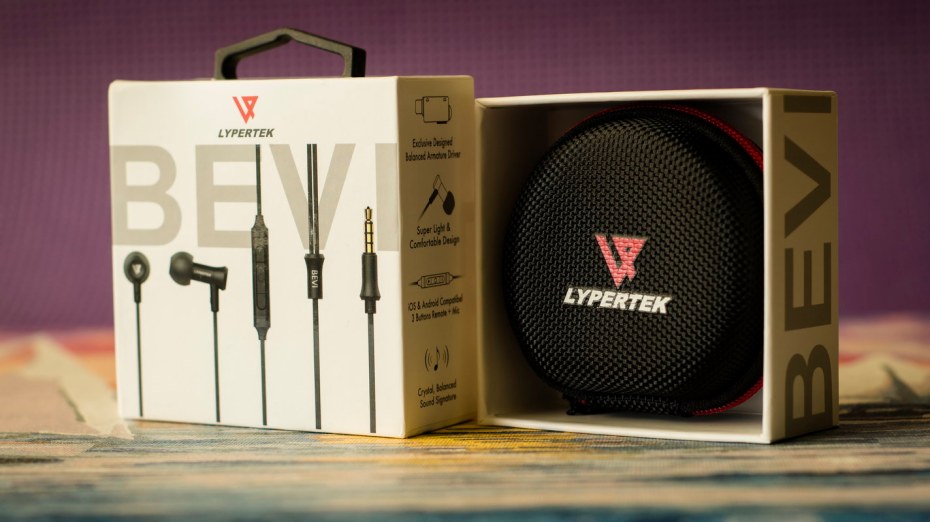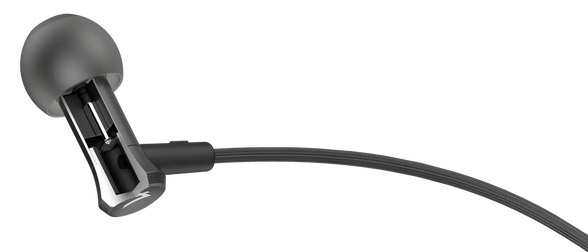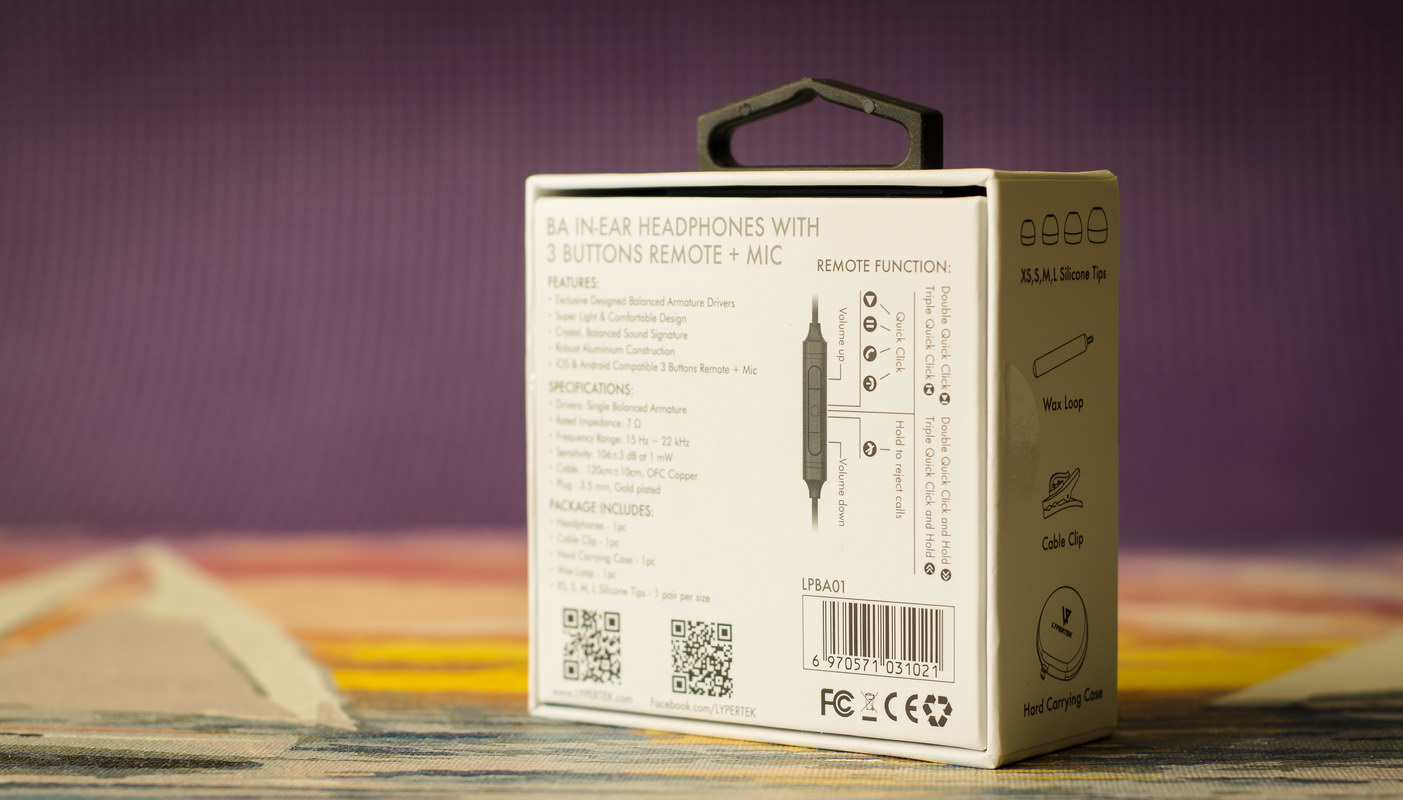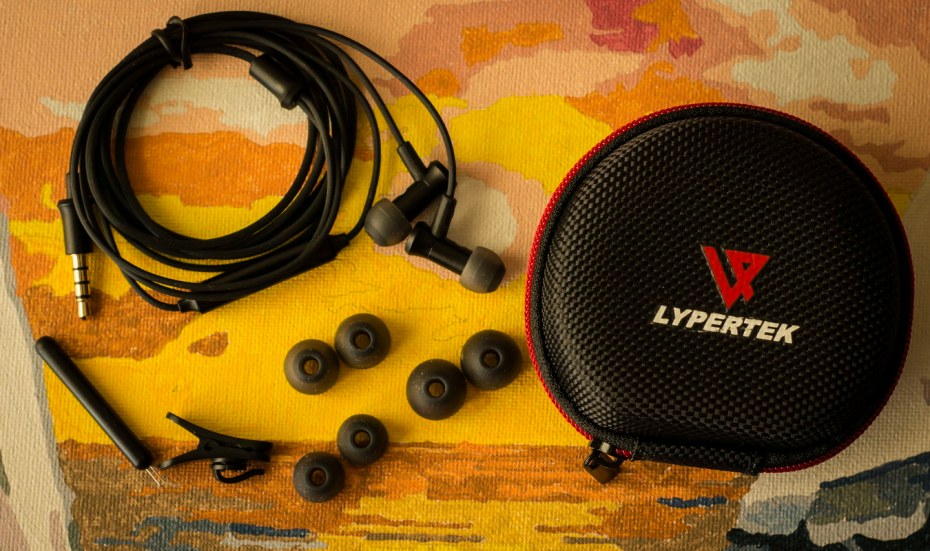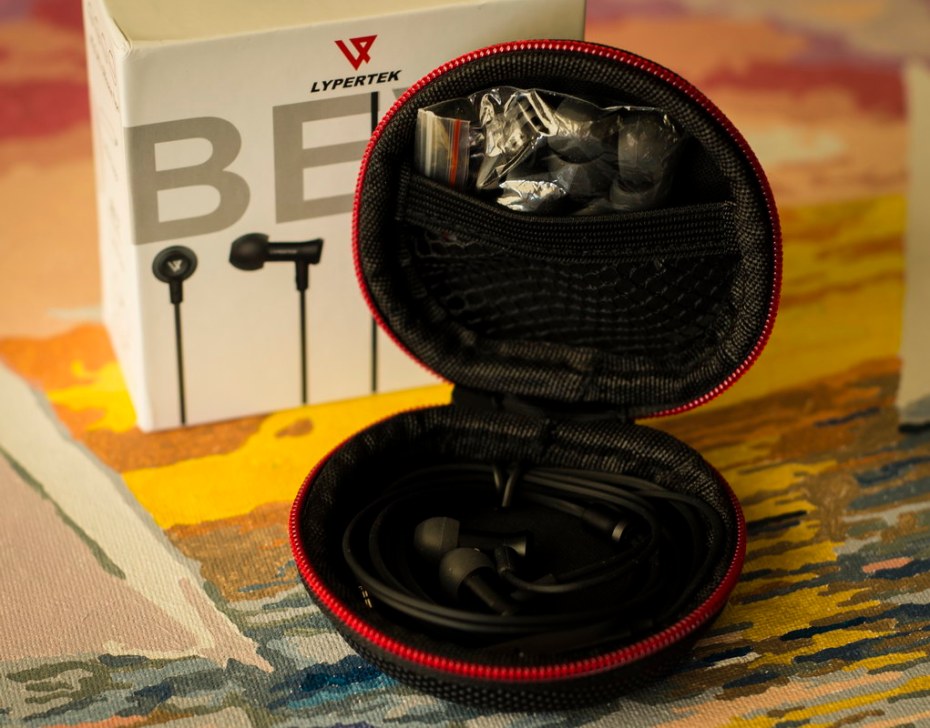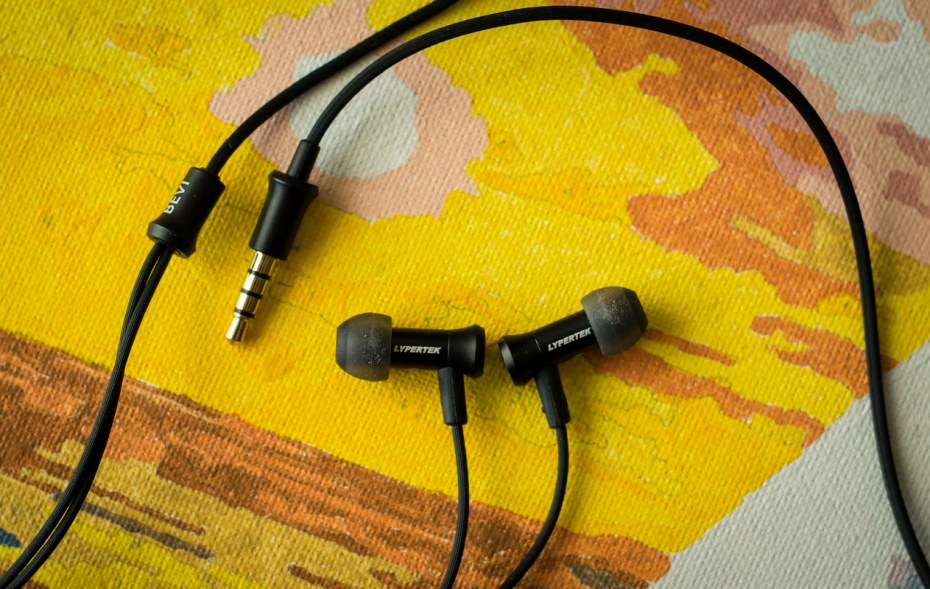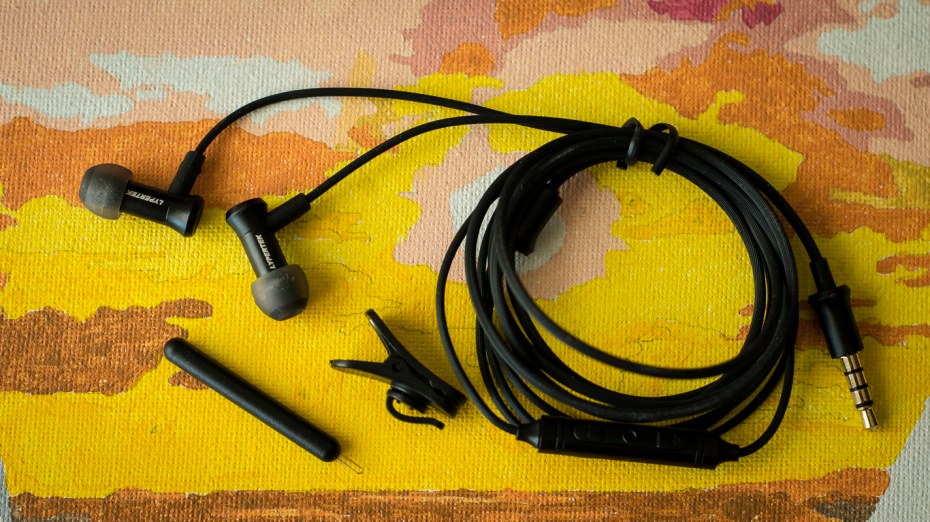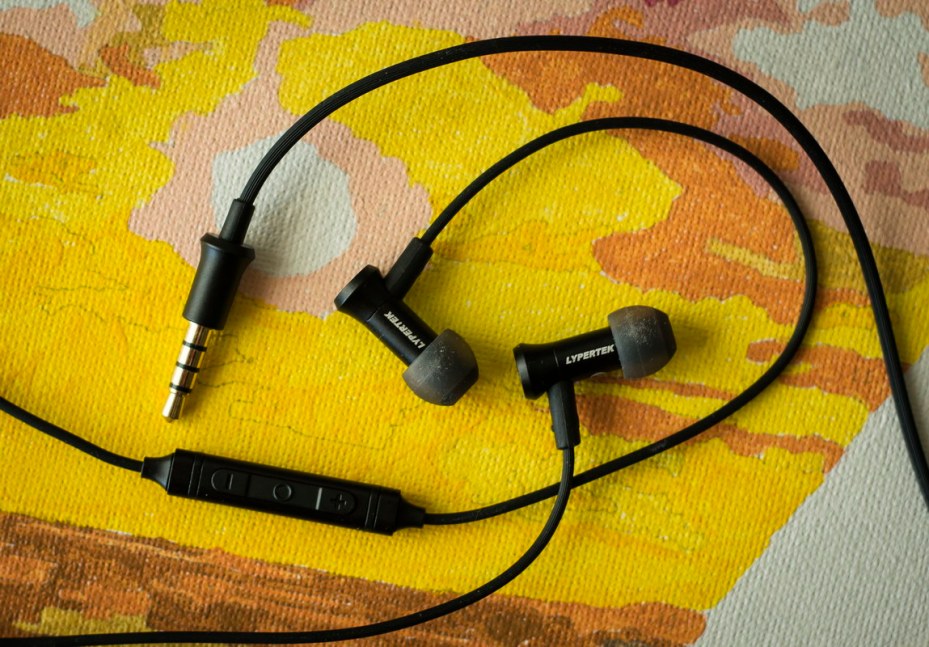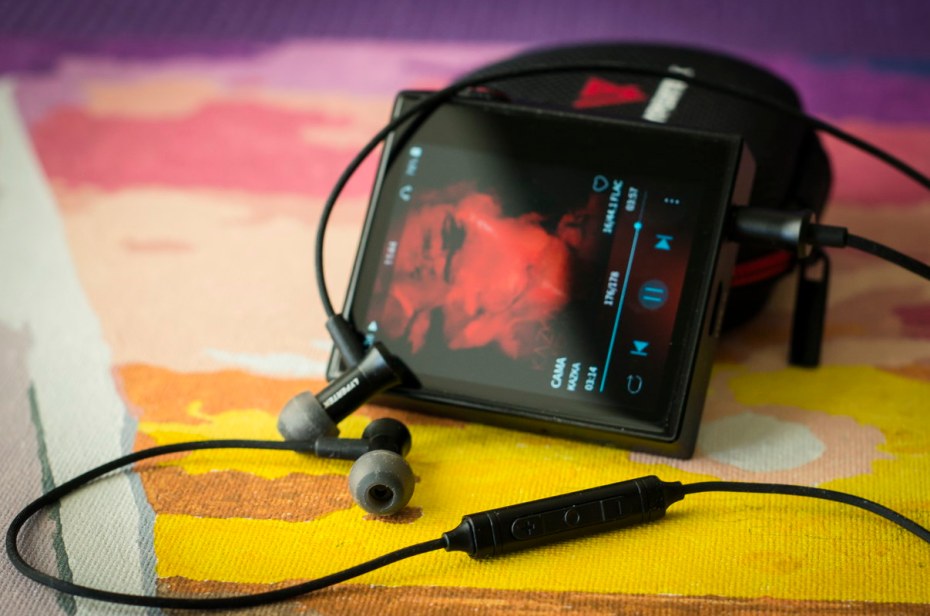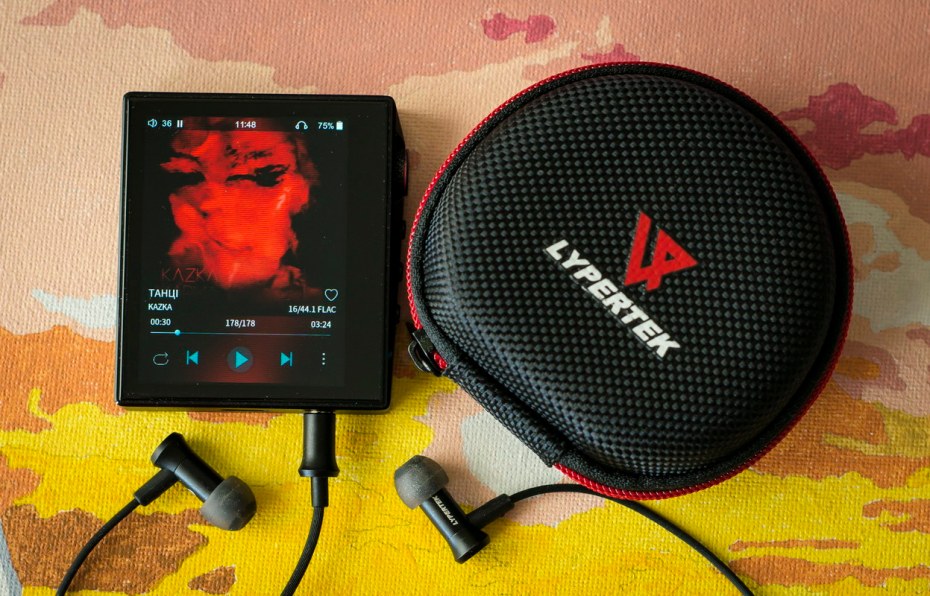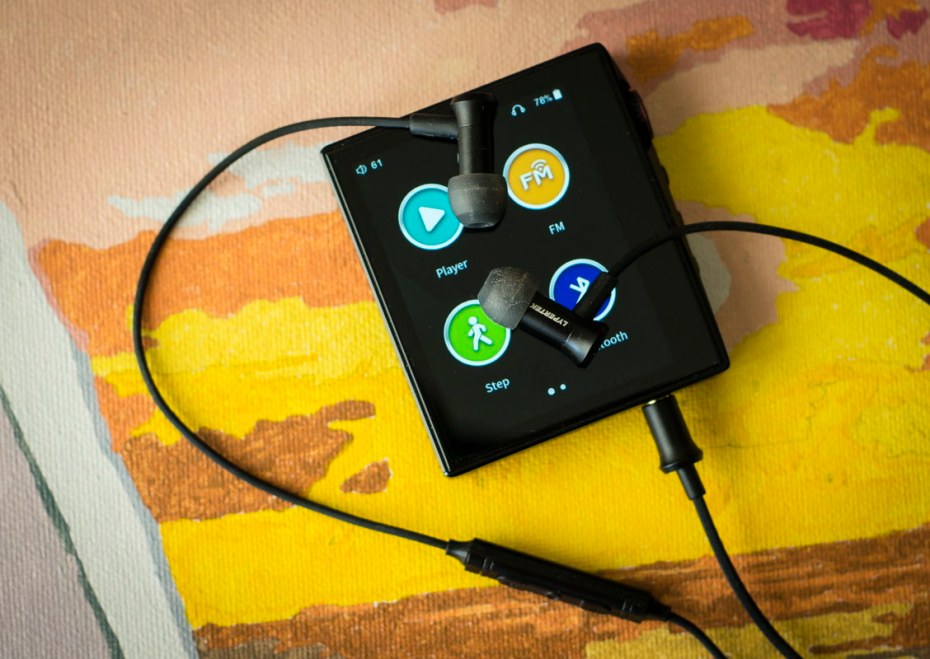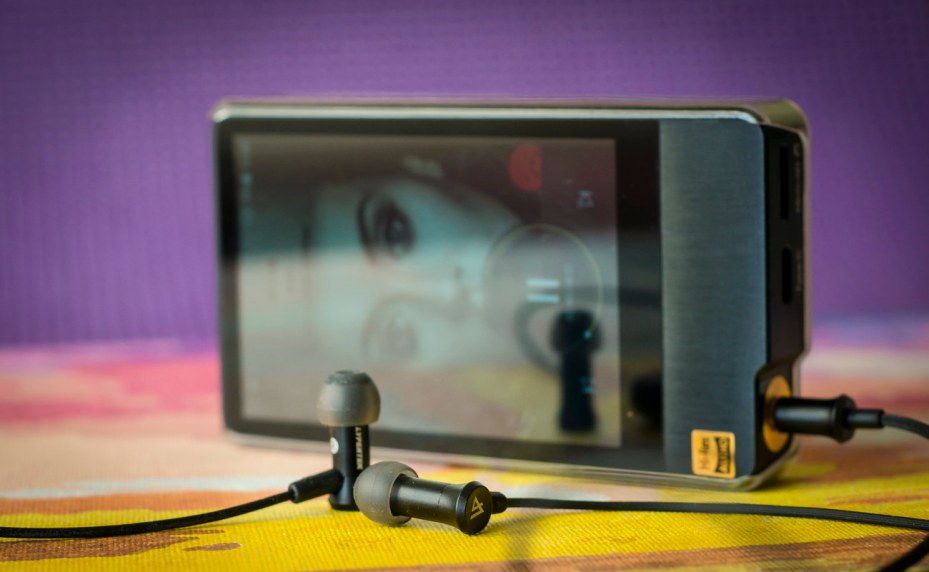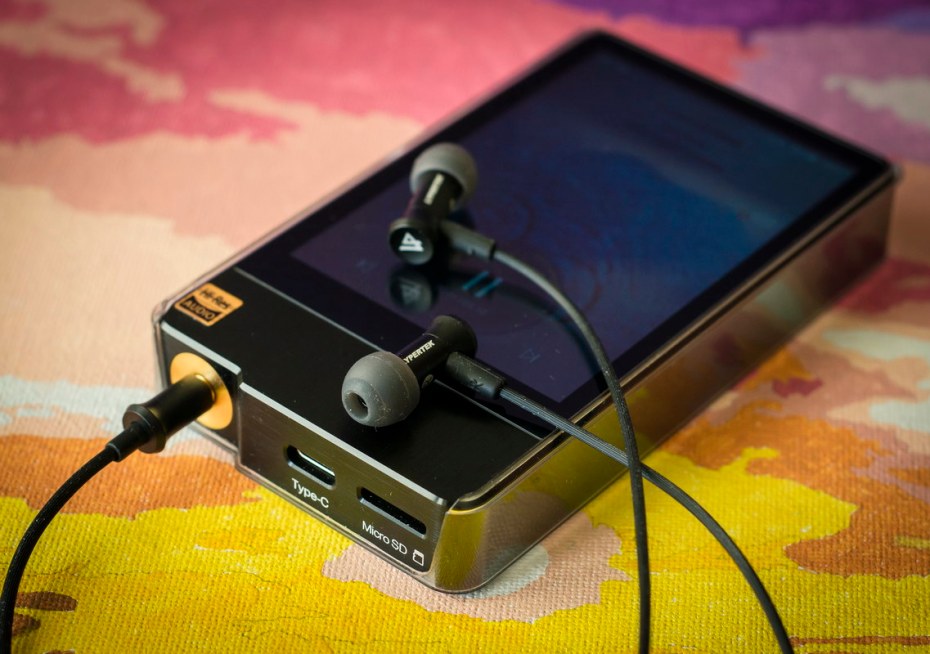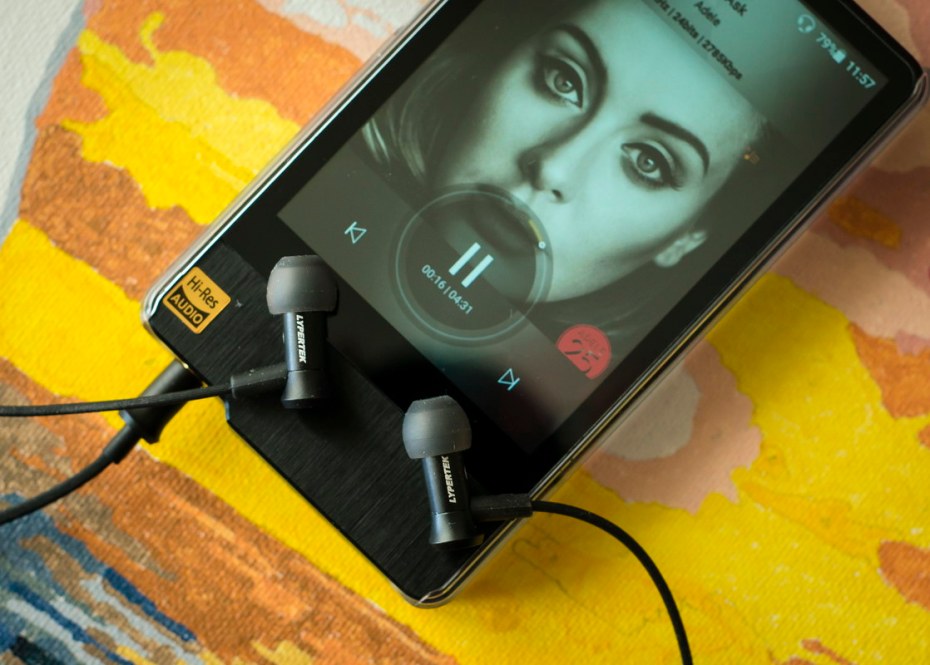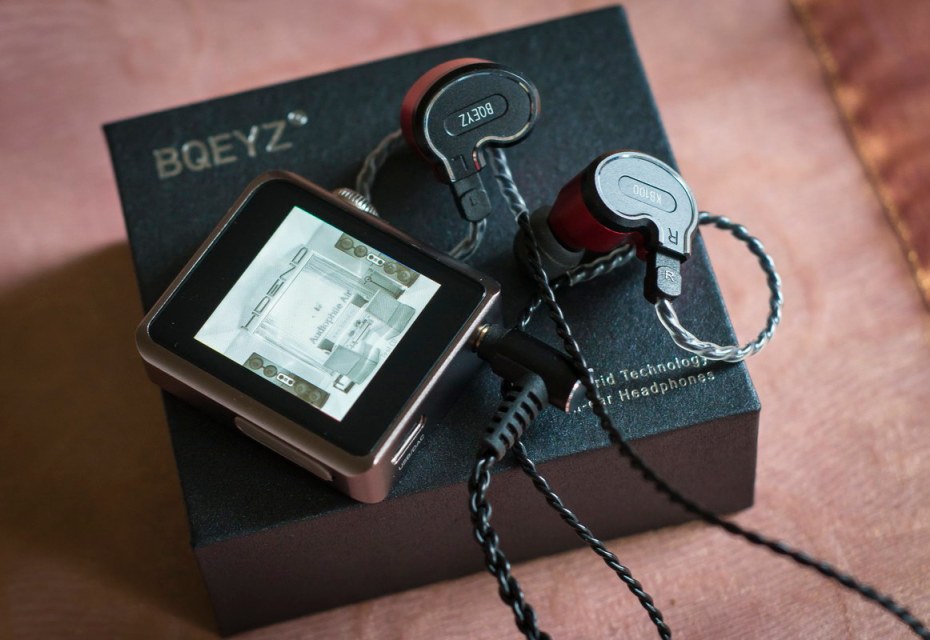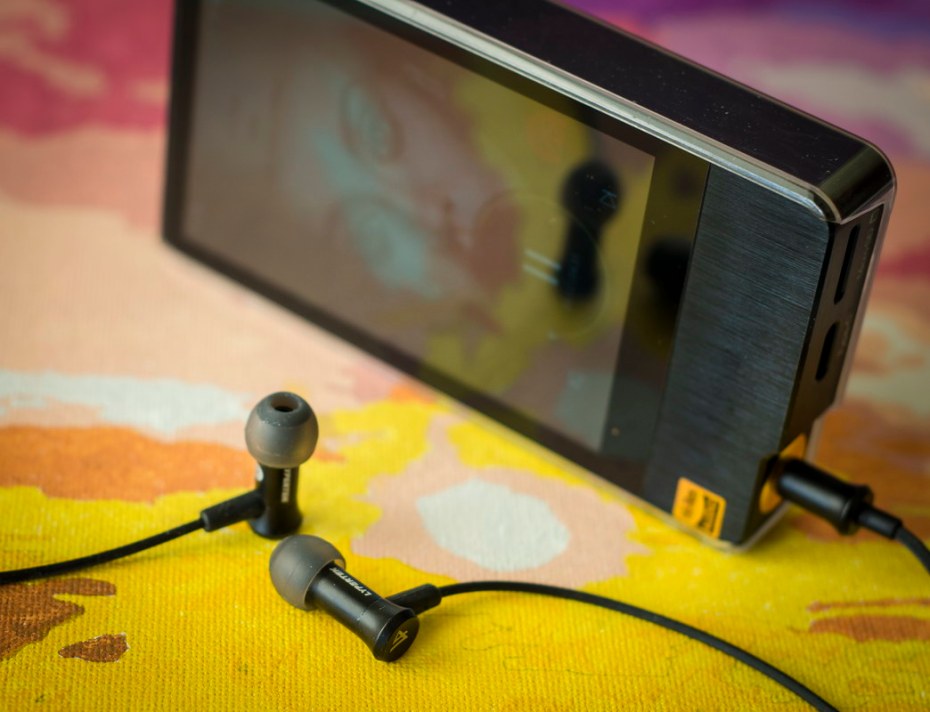Introduction
Lypertek is a brand totally unknown to me, until now. Looking for information, I have found that in the year 2017, they presented their first model, called Mevi. Currently his catalog is not much more extensive, as there are only three models: Bevi, Mevi (with a dynamic driver) and Tevi (Bluetooth with 6mm dynamic driver with graphene diaphragm). But it is still very striking that, in the multidriver era, is betting on a single BA, as the most expensive model to date, from its catalog.
Lypertek seems to want to present models with good sound, but adapted to daily use. Maybe that's why Bevi are like that: a very small model, free and simple, with microphone and three buttons, compatible with most devices.

 Specifications
Specifications
- Driver: Single Balanced Armature
- Frequency range: 15Hz - 22kHz
- Sensitivity: 106dB ± 3dB @ 1mW
- Impedance: 7Ω
- Cable: Fixed, 120cm ± 10cm, OFC Copper
- Plug: 3.5mm, gold-plated

 Packaging
Packaging
The Bevi come in a white rectangular box 87x87x38mm. It has a black plastic handle on the top for exhibition. It is sealed, underneath, with "tamper evident" adhesives. The whole box is very descriptive: on the front you can see the logo in red, the brand in small black letters, the model in large grey letters and, above, a photo of the different parts of the IEMs. On the back, the characteristics, specifications, content and a pictogram summarising the operation of the remote control are displayed. In addition, there are two QR codes with links to the website and its Facebook page. On the side faces there are multiple icons showing the content and features. Finally, on the bottom side, there are some recommendations for use, no matter how much we like this hobby, we must take care of our ears.
Once the box is open, you can see a splendid and functional rigid box with zipper. Inside it are the Bevi and a zip bag, which contains:
- 4 pairs of silicone tips (XS, S, M, L). The M tips are placed in the IEMS.
- A wax cleaning tool.
- A clothespin.
The box is very compact and highly descriptive, the carrying case is the type I always expect, also comes personalized with the logo of the brand, is more rigid and is not completely round. There are 4 pairs of tips, instead of the typical three sizes. The clothing clip is very suitable for holding the microphone. Finally, a great detail to clean the channel of possible traces of wax.
Little can be asked for more because of the price and size of the package. The only complaint is that the difference in size between the M tips and the L tips is very large. An intermediate size would have gone very well for me, as my channel is halfway there.

 Construction and Design
Construction and Design
The Bevi are very small, tiny aluminum cylinders, narrow nozzle and rear of larger diameter. Very light, but with fixed cable. This rear part is not flat, but is shaped like a bowl, shape that makes it easy to press against the ears, with the tips of your fingers. In this area, the logo is shown. On the side of the capsule, the mark is written. The channel indications are on the bottom of the capsules, near the cable connection. And the name of the model appears on its splitter. This splitter piece is a black cylinder, with one of the ends with a larger diameter, something that is also repeated on the outside of the capsules, as in the sleeve of the plug. All these parts, the splitter, the remote control and the pin cover, seem to be made of the same material as the capsules: aluminium. The cable has tiny grooves in its plastic sheath. It is fixed, relatively thin, more, after splitting, touching the minimum required to withstand daily use.
The capsules, despite their small size, are very compact and quite resistant. The union of the cable with them is very well resolved, since the plastic cover protects, without being too rigid, it does not offer looseness nor sensation of detachment after its manipulation.
The remote control offers similar strength and construction, giving the same sensation of solidity and durability as the capsules themselves and the rest of the pieces. The 3.5mm jack plug is gold plated.
Finally, the cable is fixed, plastic-coated and, in my opinion, too thin for intensive daily use. I think it's the weakest point in the chain. Furthermore, if the cable had been removable, it would have been a very appreciated added value, both in versatility and durability.
Another particularity is the size of the nozzles, narrower than average, which makes it difficult to be compatible with the rest of the tips in my collection. I've tested the 3.8mm inner diameter tips, these being the largest size that can be used safely.



 Adjustment and Ergonomics
Adjustment and Ergonomics
Being a narrow cylinder, whose nozzles are small in diameter, the adjustment is quite free. Depending on the size of the tips, it is possible to opt for a superficial or almost deep insertion. Depending on the depth of the adjustment, differences can be seen in the sound, something habitual, on the other hand. But this time, due to the ease and freedom of adjustment, you can experiment with the size of the tips, in order to deepen the insertion. In this way, greater immersion and clarity is achieved.
The fit can be traditional, downwards, like on the ear. The downward placement has a disadvantage, as it causes more microphones. But if it is placed on the ear, this effect disappears completely. The only drawback is that the microphone is very close to the ear, that is, farther from the mouth.

 Sound
Profile
Sound
Profile
The Bevi have a neutral profile, but with a slight warm tendency, with very linear low and medium. Again, globally, it could be categorized as mid-centric, but this time the central dominance is more balanced.
 Bass
Bass
Surprisingly, the Bevi's lower zone is better than expected a priori. Taking into account the precedents in single BA, I expected a similar situation. But, in this case, there is a greater presence from 40Hz. From this point on, the zone is very linear across the whole range. There is therefore a slight emphasis on the lower midrange. Below 40Hz, the zone exists and is clearly audible, but the timbre is that of a single BA, with that particular sonority that takes it away from depth and realism. However, on top, the sound improves in body, timbre and naturalness. It even defends itself relatively well in themes with a greater presence in this area, keeping the distortion at bay. Lypertek has done a good job to give the BA a better response in this range. Of course, the Bevi cannot be said to have been designed to reproduce genres dedicated to the lower zone with total fidelity, but they defend themselves logically well. They have a good mid bass punch, a more than acceptable texture, a compact body, good speed and detail. Another thing is the amount of air that is able to move, which, of course, is not very large. But the level of the zone is quite acceptable, even when the music proposes passages of complicated bass or without filtering, getting to reproduce them without being problematic.

 Mids
Mids
The central zone is ahead of the rest in presence, although its predominance is not overwhelming, as the neutral tone is imposed. But, without a doubt, it is the most outstanding area of the whole set.
It has a really natural tonality, coming from a single BA. The voices do not have excessive body, they are maintained with a soft face, very good articulation, splendid execution, very clean and agile. The whole range, in general, sounds very spaced, very little focused and free of any concentration. Perhaps, sometimes, there is a tendency to sound somewhat disperse, because they are very open and airy. However, this particularity makes them very suitable for music with many instruments, as they have very good recreation.
As it could not be otherwise, the mids have a remarkable resolution and a pleasant feeling of richness in the reproduction of details. Pleasant, because neutrality prevails over analytical ability, producing a slightly warm sound.

 Treble
Treble
The Bevi trebles have a great balance between extension and presence. The control is excellent, at no time will the high notes sound too sharp or cutting, but everything will stop at the precise moment. Thus, the sibilances are brilliant by their absence. The high range still maintains the generalized neutrality of the Bevi sound. Trebles are well represented, relatively fine, but never penetrating, but more extensive than sharp, measured than brilliant. Their incidence in the rest of the ranges is always positive, providing a lot of air and separation, without providing hiss or roughness, allowing the sound to be fluid and smoothly liquid.

 Soundstage, Separation
Soundstage, Separation
The air and the good sensation of separation, generate a moderately wide scene, that does not extend, in spite of the good cleanliness of the sound. But the most limiting factor in this sense is the lack of depth. The scene has good stratification, but lacks the necessary dynamism to cohesion the different planes, in a more three-dimensional recreation. Thus, the image is perceived more frontal, but with a limited expansion of depth and verticality.

 Comparisons
Ourart Tini
Comparisons
Ourart Tini
The Tini are also single BA. On the outside their construction, design and durability feel is excellent. On the inside, it's the other way around, their sound is much more delicate than that of the Bevi. In addition, they are also much harder to move. Their delicacy means that they have not been designed for music where the lower zone is predominant. Nor are they suitable for playing very loud music. The Bevi, on the other hand, are much more all-rounder: they move quite easily, their lower zone has a greater presence, they are warmer, but they also have less presence in their upper zone. Let's say that both IEMs have been tuned in a complementary way: the Bevi offer a sound more oriented to the most current music, pop, rock, even electronic music. Thus, their tuning goes in that sense, more warmth and extended trebles but more restrained. The Tini offer all their splendour with classical music, symphonies, operas...They are also suitable for world music, styles with vocal predominance, Jazz, Blues, etc. Thus, they offer their greatest virtues in the upper-middle zone, where they have a greater predominance of emphasis. In this way, the Tini recreate the music with more light and clarity than the Bevi, while they offer a better balance in the whole range of frequencies.
The lower Tini area is very light, even compared to that offered by the Bevi. Thus, its incidence in the sound is minimal, while the Bevi offer a much more audible and normal low zone, with greater incidence in the rest of the ranges.
The mid-range of both, abstracting from the influence of bass and treble, offer a similar presence, with quality, resolution and level of detail almost at par. Another thing is the timbre of each one. The Tini mids have greater influence from the upper zone, in fact, their upper mids are emphasized. While the Bevi, present the mids with more warmth and a more restrained brilliant spark.
The upper zone has a similar extension, but the presence is greater in the Tini, without it supposing that they offer an exaggerated, sharp and denatured zone. On the other hand, the upper Tini area is very enjoyable. Just like the Bevi, but with a more restrained presence.
The Separation and level of detail is greater in the Tini and their scene benefits from it. But both have a very similar instrumental recreation, wider than deeper.
 Conclusion
Conclusion
The Lypertek Bevi are IEMs of a name difficult to remember, but with a sound just the opposite, as it persists with ease.
I think, to release some IEMs with a single BA driver, with fixed cable and microphone included, is pure daring. It is not easy to compete with the immense amount of IEMs with advanced dynamic drivers, not to mention the multidriver fight. That's why you have to offer something different. In this case, size does matter. But in the end, sound is primordial. And that's where Bevi have their market, in people looking for an alternative to all the above, without losing all the virtues: ease and freedom of use, small size, fit, comfort and all-rounder capability. The Bevi offer a different sound, but mature, a neutral profile, warm mid-centric, detailed, with good resolution and clarity. In short, something standard, almost normal, but really different in its sound essence. Do you dare to try it?

 Sources Used During the Analysis
Sources Used During the Analysis
- Burson Audio Playmate.
- xDuoo X3II.
- AGPTek IMP.
Ratings
- Construction and Design: 70
- Adjustment/Ergonomics: 85
- Accessories: 80
- Bass: 65
- Mids: 88
- Treble: 78
- Separation: 80
- Soundstage: 70
- Quality/Price: 75
Purchase link
https://penonaudio.com/lypertek-bevi.html
You can read the full review in Spanish here:
https://hiendportable.com/2019/06/30/lypertek-bevi-review/



























